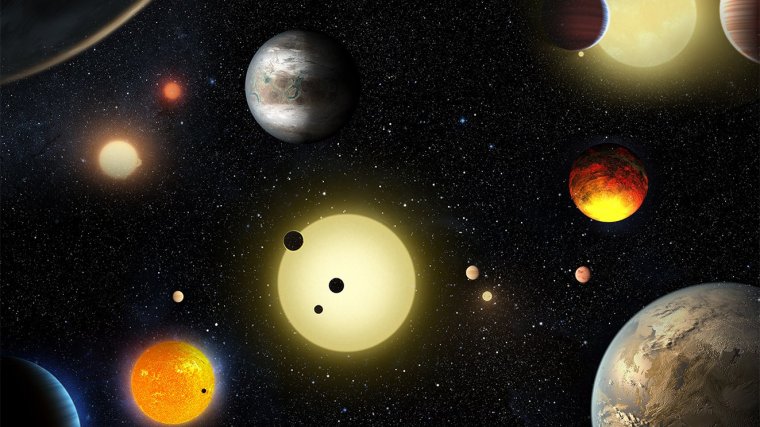| News / Space News |
Kepler Mission Announces Largest Collection of Planets Ever Discovered
NASA | MAY 11, 2016
NASA's Kepler mission has verified 1,284 new planets -- the single largest finding of planets to date.

The image is a concept piece depicting select Kepler planetary discoveries made to date. ![]()
Analysis was performed on the Kepler space telescope's July 2015 planet candidate catalog, which identified 4,302 potential planets. For 1,284 of the candidates, the probability of being a planet is greater than 99 percent - the minimum required to earn the status of "planet."
An additional 1,327 candidates are more likely than not to be actual planets, but they do not meet the 99 percent threshold and will require additional study. The remaining 707 are more likely to be some other astrophysical phenomena. This analysis also validated 984 candidates that have previously been verified by other techniques.
Kepler captures the discrete signals of distant planets - decreases in brightness that occur when planets pass in front of, or transit, their stars - much like the May 9 Mercury transit of our sun. Since the discovery of the first planets outside our solar system more than two decades ago, researchers have resorted to a laborious, one-by-one process of verifying suspected planets.
In the newly validated batch of planets, nearly 550 could be rocky planets like Earth based on size. Nine of these orbit in their sun's habitable zone, which is the distance from a star where orbiting planets can have surface temperatures that allow liquid water to pool. With the addition of these nine, 21 exoplanets are now known to be members of this exclusive group.
YOU MAY ALSO LIKE


